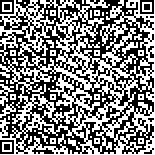| 摘要: |
| [摘要] 目的 探讨雅培i2000全自动免疫发光仪用化学发光免疫分析法,与杭州中翰盛泰科技有限公司艾克美免疫荧光分析仪用免疫荧光干化学层析法检测总前列腺特异性抗原(TPSA)的可比对性。方法 对免疫荧光干化学层析法定量检测TPSA进行了性能评价,内容包括批内重复性、线性、准确度。结果 该法重复测定高、低值样本,CV<10%;线性回归方程Y=0.9748X+0.048;与化学发光免疫法的相关性分析,r=0.984。结论 免疫荧光干化学层析法定量检测系统与雅培i2000全自动大型化学发光仪具有良好的重复性、线性和方法学的相关性,非常适合临床实验室门诊急诊及小批量样本时使用。 |
| 关键词: 前列腺特异抗原 免疫荧光干化学层析法 化学发光免疫分析法 |
| DOI:10.3969/j.issn.1674-3806.2011.08.13 |
| 分类号:R 392.11 |
| 基金项目: |
|
| Comparative study between ABBOTTi2000 automatic luminometer and immone i-CHROMA Reader immunofluorescence analyzer in the detection of total prostate-specific antigen |
|
ZHANG Jin-li,HUANG Jun,LIU Xiao-chun,et al.
|
|
Clinical Laboratory Center,the People′s Hospital of Guangxi Zhuang Autonomous Region,Nanning 530021,China
|
| Abstract: |
| [Abstract] Objective To explore the comparability between ABBOTTi2000 automatic luminometer and immune i-CHROMA Reader immunofluorescence analyzer in the detection of total prostate specific antigen(TSPA). Methods Immunofluorescence dry chemical chromatography method was used for quantitative detection of TPSA in ovder to evaluate the performance, including intra-repeatability, linearity, accuracy. Results Determination of high-repetition, low-value samples, CV<10%; the linear regression equation Y=0. 9748X+0. 048; and Chemiluminescence immunoassay analysis, r=0. 984. Conclusion Immunofluorescence dry chemical chromatography quantitative detection systems and ABBTTi2000 automatic chemiluminescent instrument has good repeatability, linearity and methodology correlation and is very suitable for clinical laboratories and small-volume samples of outpatient and emergency use. |
| Key words: Prostate-specific antigen Immunofluorescence dry chemical chromatography method Chemiluminescence immunoassay method |

